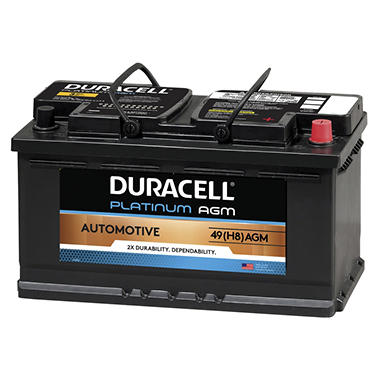....
Hum... 3-years old? While in storage do you use a battery maintainer?
I should ask, is it advisable to use a maintainer on an AGM battery because I am not certain? Hopefully, forum members can answer the question?
all depends on just how long it will sit with no charge input.
one of the best features of AGM tech is they hold better than 90% of full charge for upwards of a year or more vs FLA (flooded lead acid) will self-discharge at upwards of 2-3%/mo (settin for a year, they'll drop 25% or more)
I would recommend the AGM battery.
I have read many sources praising AGM batteries.

Thanks, added to my penny collection...
12 to 14 hours.

I'm just back from a 12 day trip, driving an average of 180 miles per day.
The scangauge shows its "typical" (since new) pattern of 14.2 v immediately after starting, eventually dropping to 13.7 to 13.9 and staying there for the rest of the driving day.
sounds like the charging system is OK then.
but if its dropping to down to 12.4 within an hour and no phantom loads/drains?
i dunno... it all depends upon how quick the engine fires up, meaning as long as she rolls over nice and quick, you dont have to run glow much to get it goin, guess its just a matter of what you feel comfy with.
my basic test for a starting battery is: how long can you crank it before the RPM-drop rate starts to make you nervous - as in: if she cranks at its normal RPM and fires right up, well.. it's likely 'good enough'
but if she starts to sound tired just before she ignites....
dump it.
mind you, my perspective is from the point of view of:
if you're out on the water (the BIG pond), cant see the beach and cant get the engine going (even on a sailboat)
?
you might never make it back
why i mentioned on another thread that airline pilots tend to be my best (boat) customers, since
they understand that if you're cruising at 38000feet, goin 5or600 MPH, you cant just pull over and look under the hood
.
and if one is 100 miles out in the middle of nowhere - typically in a place with no cel service ?
you might be buzzard bait before anybody comes along...
Sears sells a $60 DC clamp-on (which
looks amazingly like the $80 Fluke they also sold).
I bought one soon after buying the Sprinter. Very handy for measuring glow plug (etc) performance.
wow...
80bux? for a DC clampmeter seems like a pretty good deal - for the occasional user anyway...
altho it has been quite awhile since i bought my
fluke374 (2005 or 6?) but do note that the latest vers of it is
still priced in the $300 range (at that vendor anyway)
in any case, 'being a pro' have learned the hard way that it ends up being 'cheaper' to just buy the best tools the first time, since the low priced item will invariably fail at the moment you need it most
and.. well... hows that one go?
'buy cheap, pay twice'
I've got the Sears Diehard Platinum charger... it does follow the pattern you suggest (and, when told it's on an AGM, rises to 15.6 v for the final stage).
Agreed... the batt drops to 12.4 v within an hour after shutting down
1 hour, with NO load? (meaning not connected to anything on the van, 1 terminal disco'd)
like i said above, all depends on how comfy you are with its crank speed/duration.
the other thing to check would be what volts pull down to while cranking - if it wont HOLD above 11.7 while loaded up on the starter?
no way i'd leave the dock with it...
unless of course, you can jump your house bank to the crank ckt?
(like i can with my 1-2-both switch)
but as always, YMMV


 There is a MB Bulletin about batteries. Unfortunately, I cannot send a link. I do have in PDF and will attempt to send via email.
There is a MB Bulletin about batteries. Unfortunately, I cannot send a link. I do have in PDF and will attempt to send via email.

